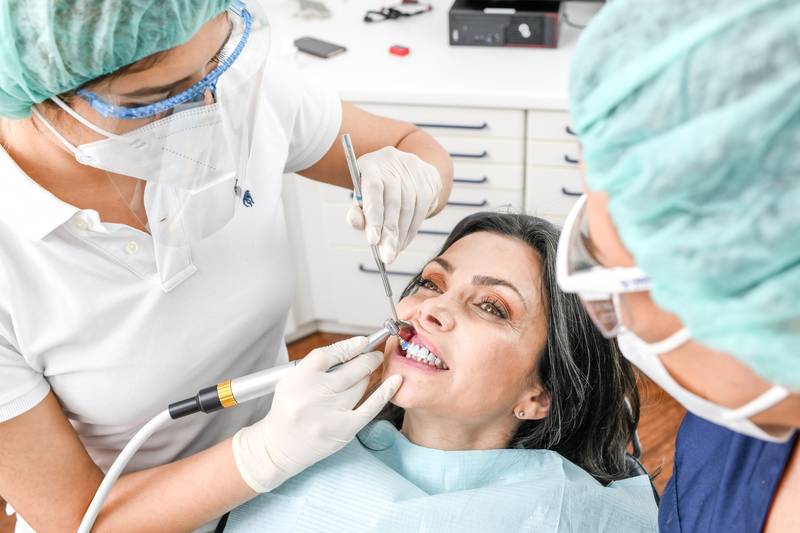“Where should one’s priorities lie when it comes to investment and activities?” This is a question raised by many decision-makers in dental practices and laboratories, especially with regards to different types of prosthesis. On the one hand, certified dental technicians in Germany – and especially those with a master craftsman’s diploma – are qualified to produce high-end prostheses. On the other hand, demand is also influenced by price-oriented considerations. At the same time, patients still attach considerable importance to beautiful teeth. Given these circumstances, how can dental practices and laboratories align their strategies optimally? Manufacturers will be providing answers to this question at the coming International Dental Show (IDS), which will be held from 24 to 28 March 2009 at the Cologne Exhibition Centre. Here they will be presenting products that meet the different demands ranging from high-end, mid-range, or price-oriented. Regardless of price category, the appliances and materials are of a high technical standard, make convincing results possible in terms of function and appearance – and they are characterised by their excellent value for money. Moreover, modular systems will be on show, using which it is possible to implement luxury, standard and even ‘budget’ solutions on a case-by-case basis. This allows dentists and dental technicians to meet customer demand for economical solutions and expensive alternatives in equal measure. Example CAD /CAM: Visitors will be able to inspect everything at the IDS ranging from large-scale facilities to separate scanners that enable manufacturer-independent data export. The milling machines produced by some manufacturers cannot only process zirconium dioxide and PMMA plastic, but also metals ranging from titanium to base metals. When comparing systems while passing through the halls, dental technicians will soon be able to find the optimum solution to enable them to meet the demands of their dentists, whatever the price segment. There is even a huge variety of dental ceramics. For example, in certain cases it is possible to choose between the more inexpensive option of press-over techniques and the more expensive veneer technique. In terms of materials, dentists will also find similar graduations in costs and aesthetics in materials for chair-side care, ranging from compomers, single-layer and multi-layer composites with or without stains, right through to milled ceramics. Developments in implantology will also be on display at the IDS. Here dentists and dental technicians will come up against questions relating to planning software and rail-guided surgery. It will be possible to have solutions both large and small demonstrated; drilling templates can be produced in the laboratory or –via data export - by partners with or without digital support. Telescopic prostheses can be reworked into temporary prostheses for the implant patient, or, using a low-cost alternative, are stabilised with the aid of mini-implants, in cases where a dent support has been lost. Implant manufacturers in particular will be exhibiting a large number of innovations, both for dentists as well as dental technicians. In order to be able to present patients with a strategy that is supported by both sides, it is advisable to take a stroll together over the trade fair. “German dentistry is reputed to be the best in the world,” stresses Dr. Markus Heibach, President of the VDDI. “Laboratories and dental practices need not choose between price-oriented or high-end dental prostheses. Whatever the case, it is all down to the art of dentistry; patients should not have to make concessions. The salient question is rather: “How can I treat each of my patients in a way that suits them best?” This is where graduated systems are necessary, that permit both economical as well as more expensive alternatives.” This is because the situation is as follows: In one case the patient opts for the most expensive treatment, in another the patient opts for the cheapest option and finally in many other cases compromises are necessary. “It’s now down to the industry to show dentists and dental technicians all options and to keep these open to them. Many manufacturers have used the time since the last IDS to develop new systems and refine existing ones. I would therefore like to invite everyone to form their own impression in Cologne this coming spring. Because the world’s largest dental show will be pulling out all the stops to enable everyone, be they owners of dental practices or laboratories, to lay the foundations for a future-oriented procurement strategy.” IDS takes place in Cologne every two years and is organized by the GFDI Gesellschaft zur Förderung der Dental-Industrie mbH, the commercial enterprise of the Association of German Dental Manufacturers (VDDI) and staged by Koelnmesse GmbH, Cologne.” Note for editors: See under “Photos” in the “For the press” section for images on past IDS shows (http://www.ids-cologne.de). Please send us a specimen copy if you print.
- Alter:
5567 Tage



